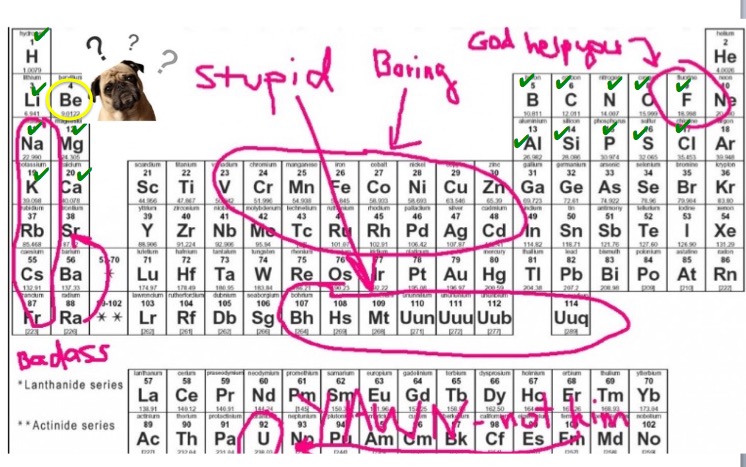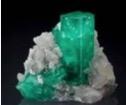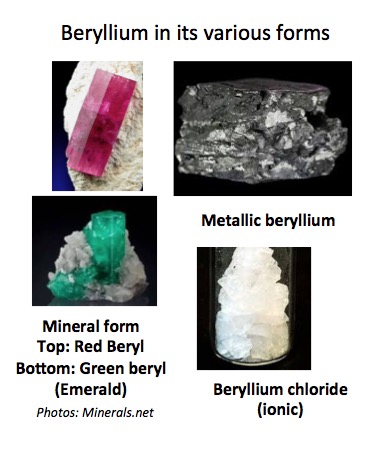


The figure above is probably not how one should choose to teach students about the periodic table, but it illustrates a point. Note that most the everyday elements—the ones we've all heard of— are found in the upper region of the table (green checks). But one seems to stick out—beryllium. I mean, how many times have you even said the word? Even chemists don't usually talk about it, let alone use it. Career-wise, if I take zero and divide it by 27 years, I will arrive at the number of times I have ever used or even thought about using it, either in its elemental state, ionic salt, or attached to carbon (organoberylium). They look quite different.
Photos: Minerals.net
But, the metal does have some interesting and rather unique properties. And if you ever happen to find yourself on the set of Final Jeopardy and the category is the admittedly-unlikely "Things About Beryllium" this may come in handy:
- It is the second lightest (atomic weight 9) of all metals. Lithium, its next door neighbor (atomic weight 7) beats it by a proton, a neutron, and an electron.
- It is the only hard, light metal that is strong.
- The strength and lightness make it useful for airplanes and cell phones.
- It is the 48th most common element on earth, sandwiched in between erbium and cesium.
- It is not found as a free element, only in minerals called beryl.
- It is toxic, and very likely carcinogenic. It takes just one-quarter of a milligram — about the weight of a grain of salt— to kill rats when administered IV.
- It can be attached to carbon to give organoberylium compounds. They are really nasty.
- Beryllium salts have a sweet taste. Don't run this experiment.
- Pure mineral beryllium is colorless. The colors come from impurities in the mineral.
Finally, should you be in the mood for some light reading, I suggest the following (1): "A spirobicyclic complex of Schmidpeter's ligand, bis(tetraphenylimidodiphosphinato)beryllium, Be(OPh2PNPPh2O)2, an inorganic analog of beryllium bis(β-diketonates)."
At the least they make the article easy to understand: "The crystal structure of bis(tetra-phenylimidodiphosphinato)beryllium (as a benzene solvate), Be(OPh2PNPPh2O)2. C6H6, was determined by X-ray diffraction and compared with that of beryllium acetylacetonate, Be(OCMeCHCMeO)2. The imidodiphosphinate is an inorganic spirobicyclic system, Be(OPNPO)2, with tetrahedrally coordinated beryllium. Unlike the planar BeO2C3 rings in the acetylacetonate, the two six-membered BeO2P2N inorganic rings are nonplanar and display a skew boat conformation."
Almost as bad as quantum mechanics.
Note:
(1) I freely admit that I don't understand one word of this.


